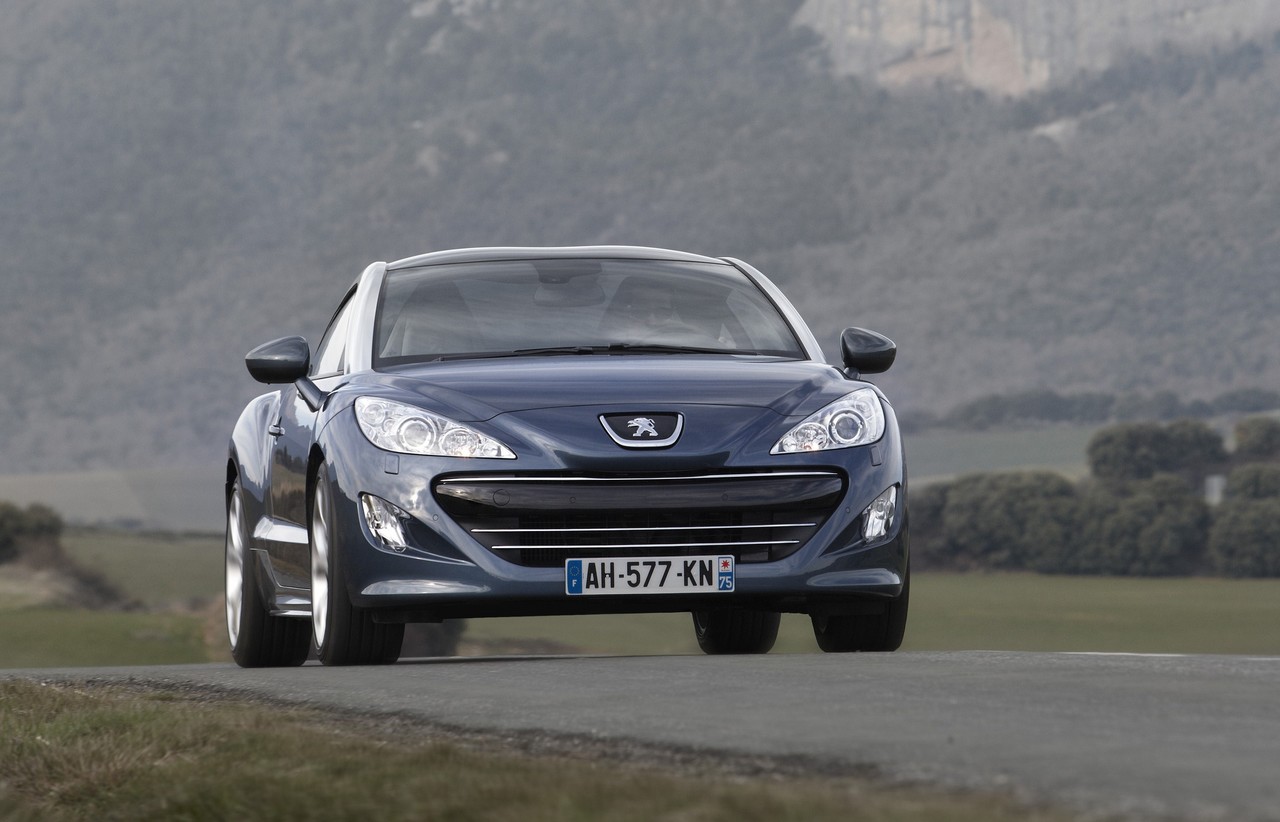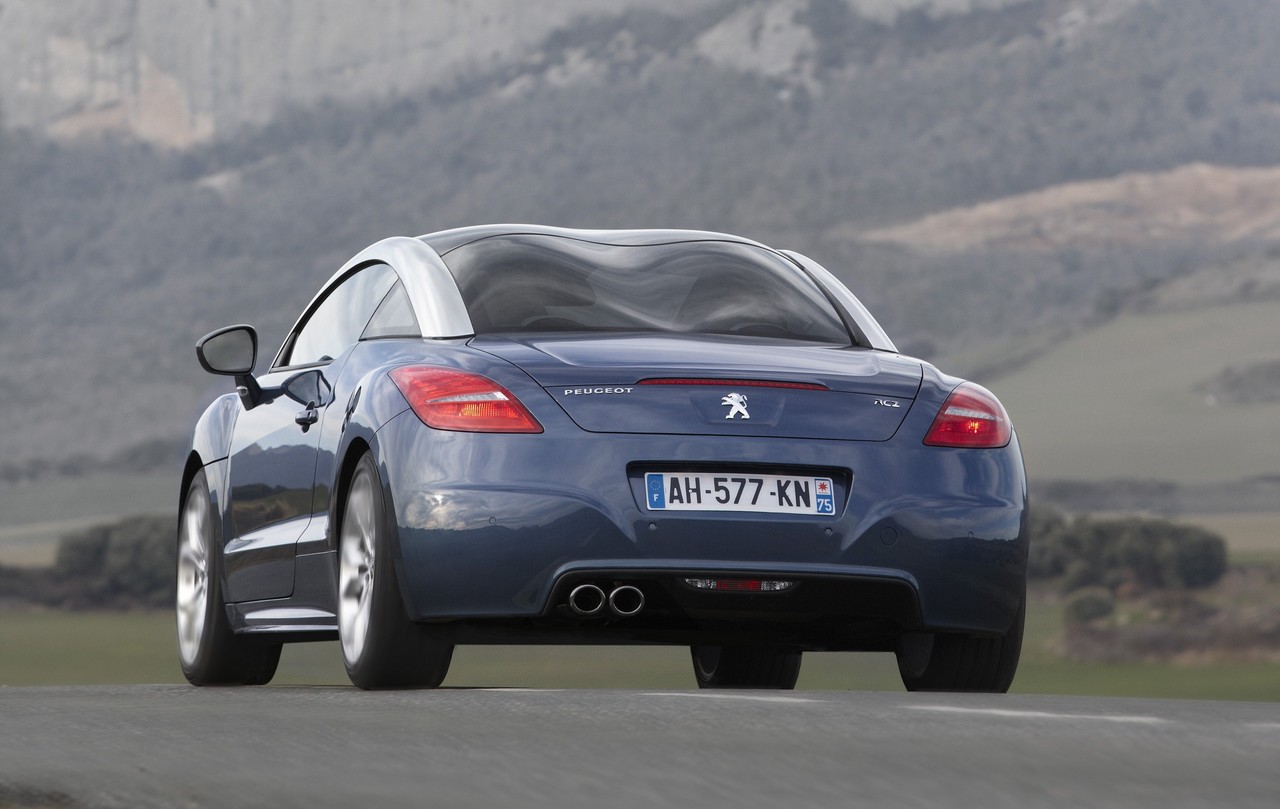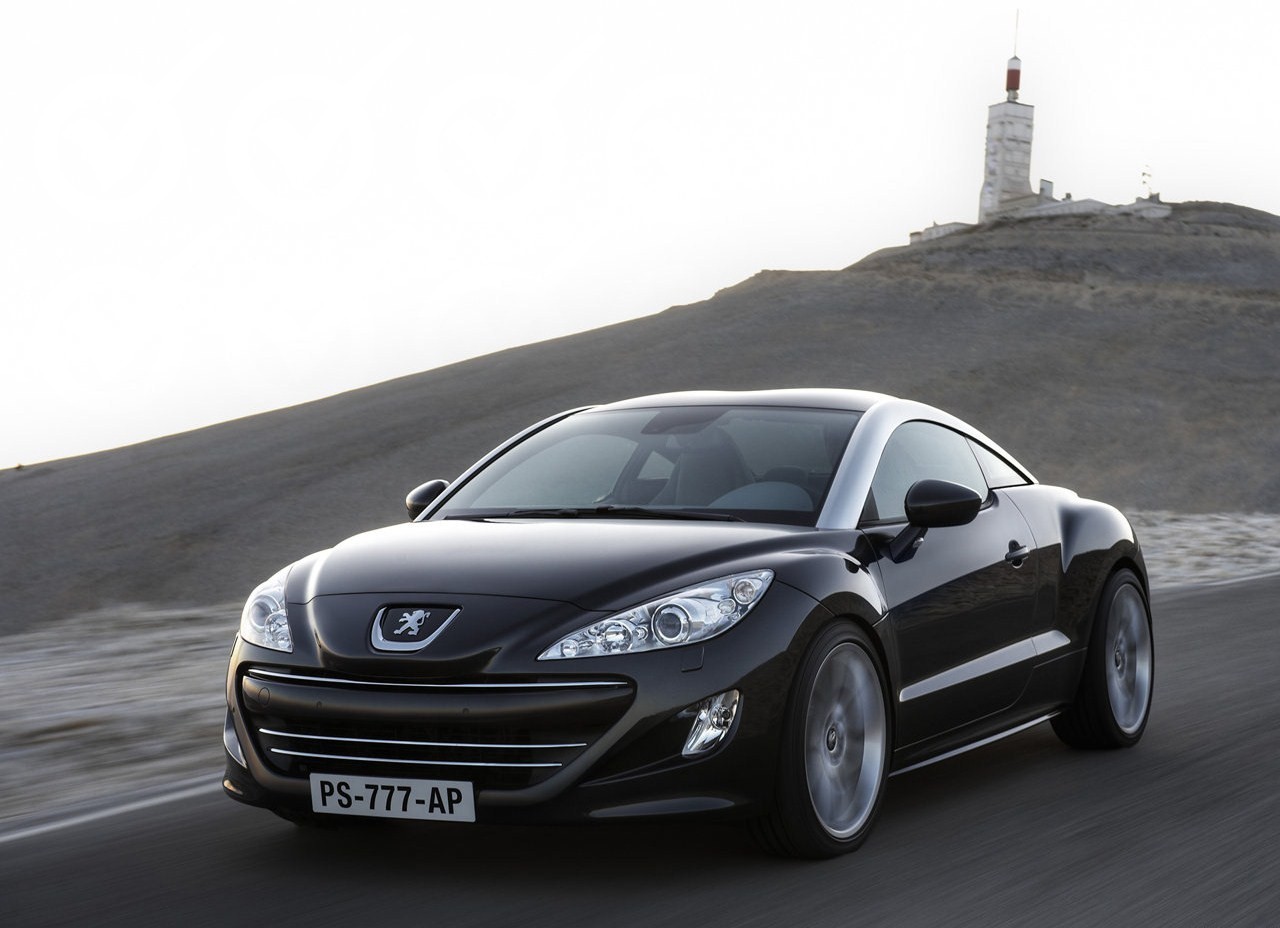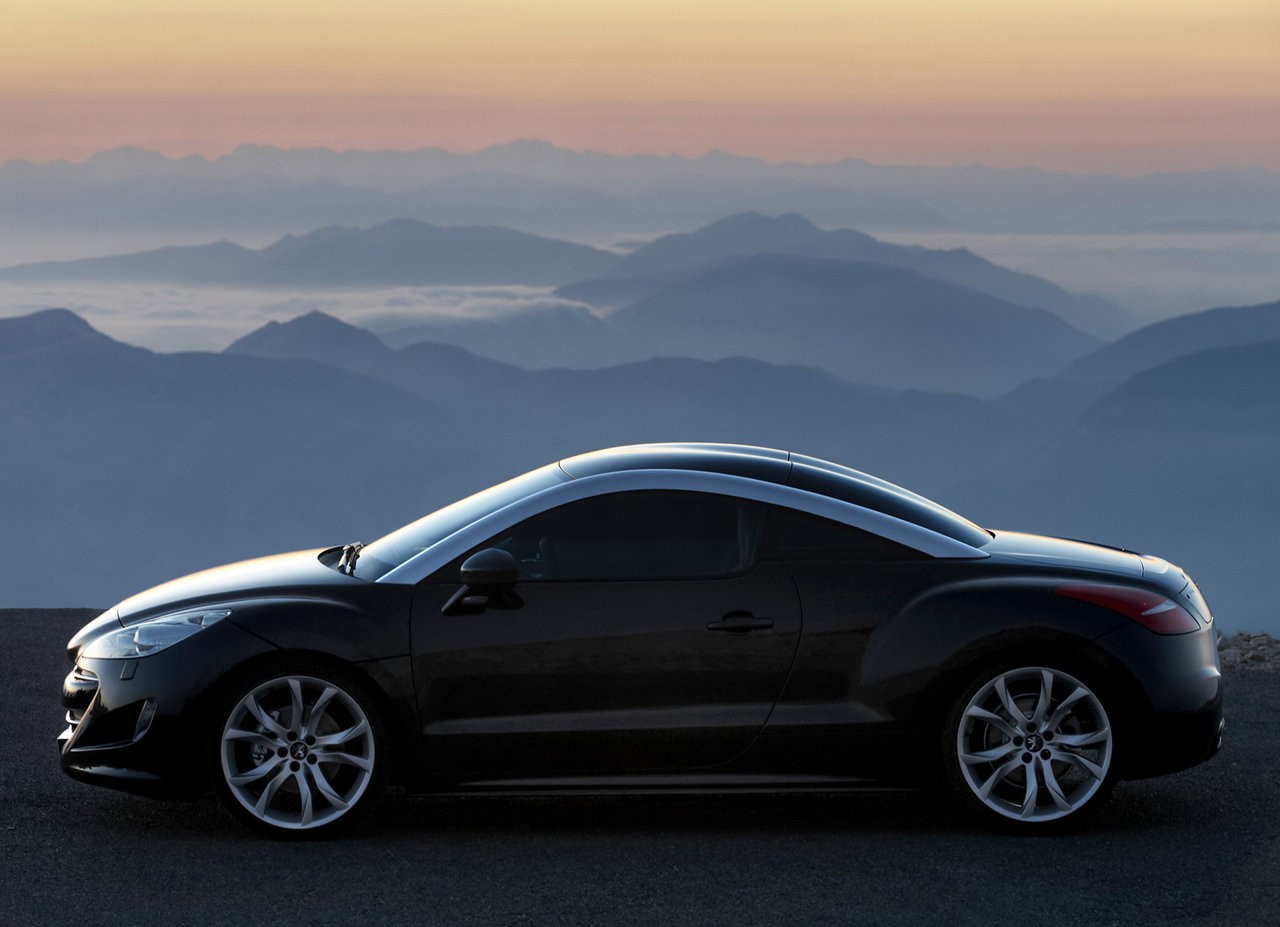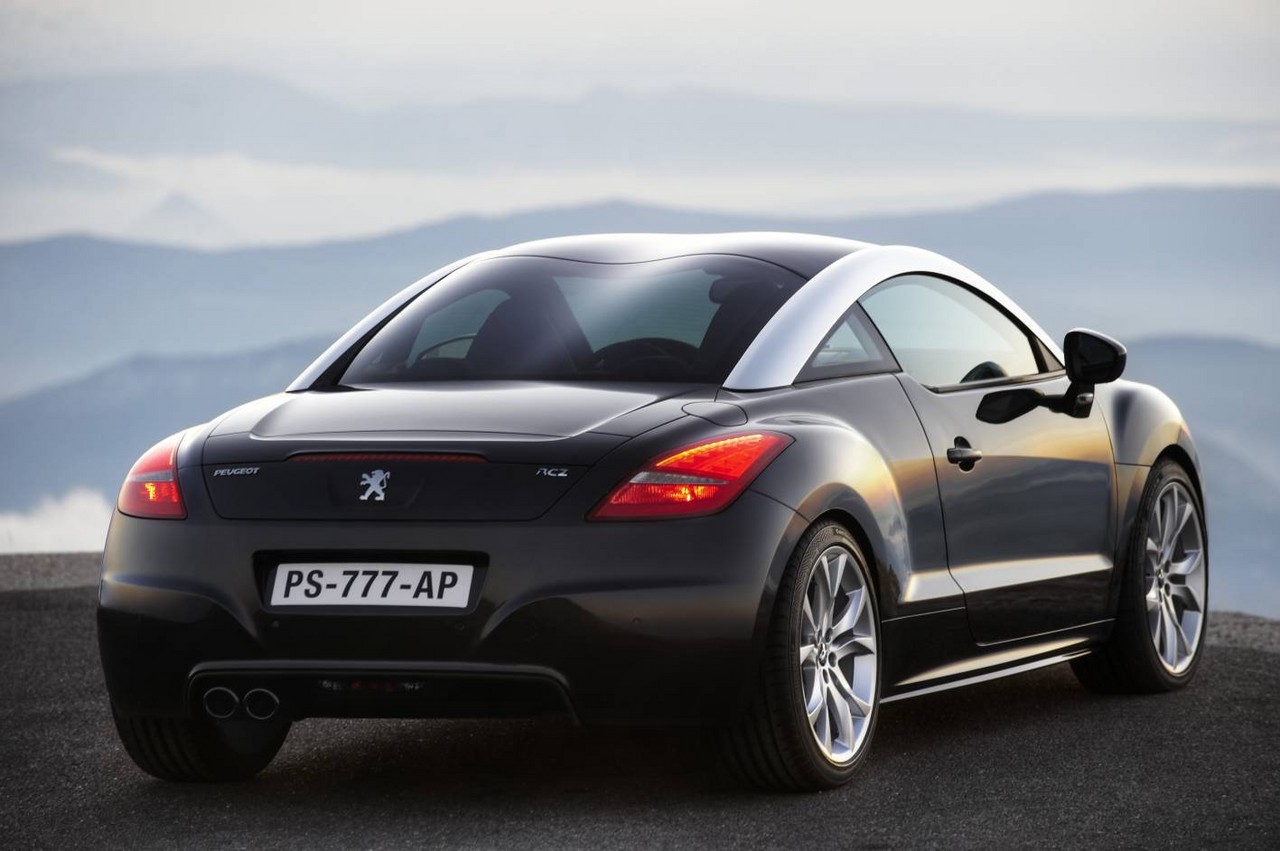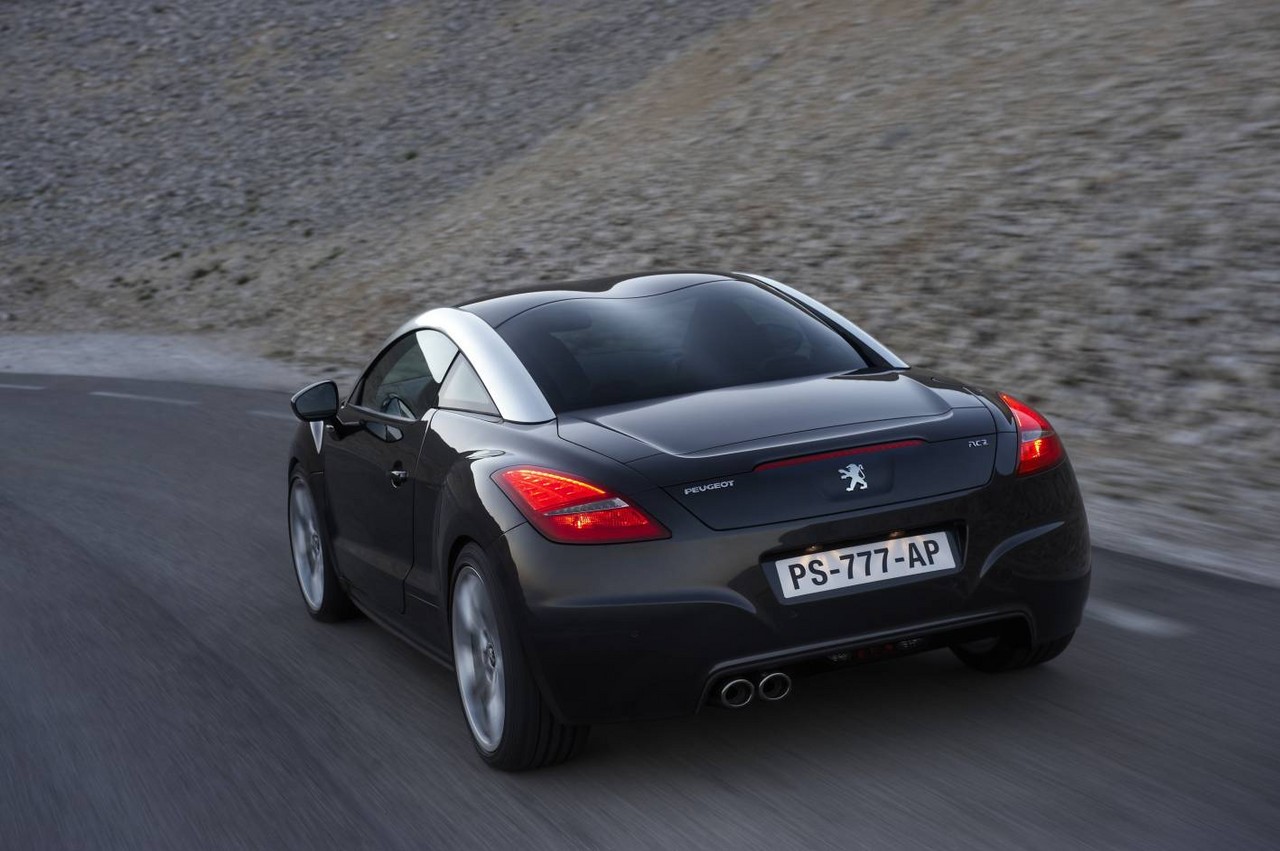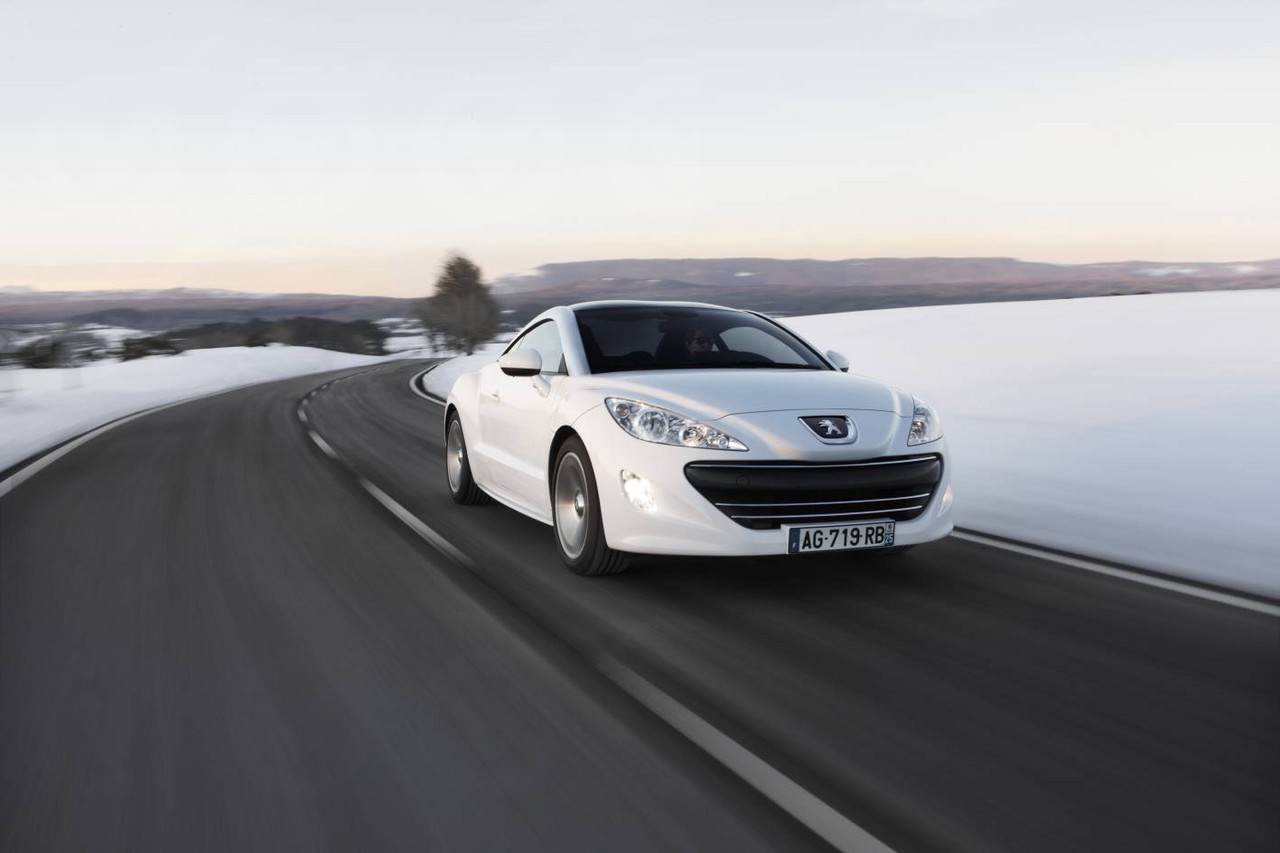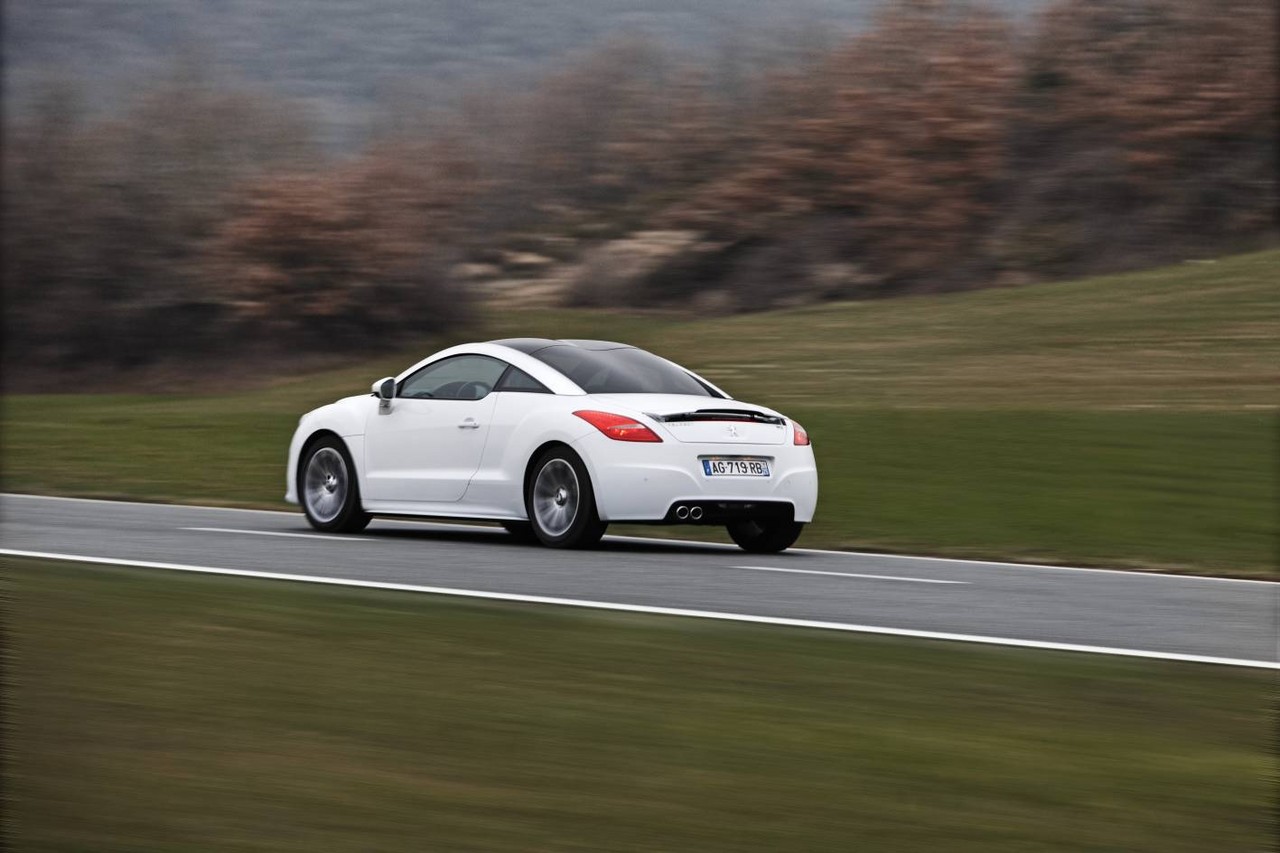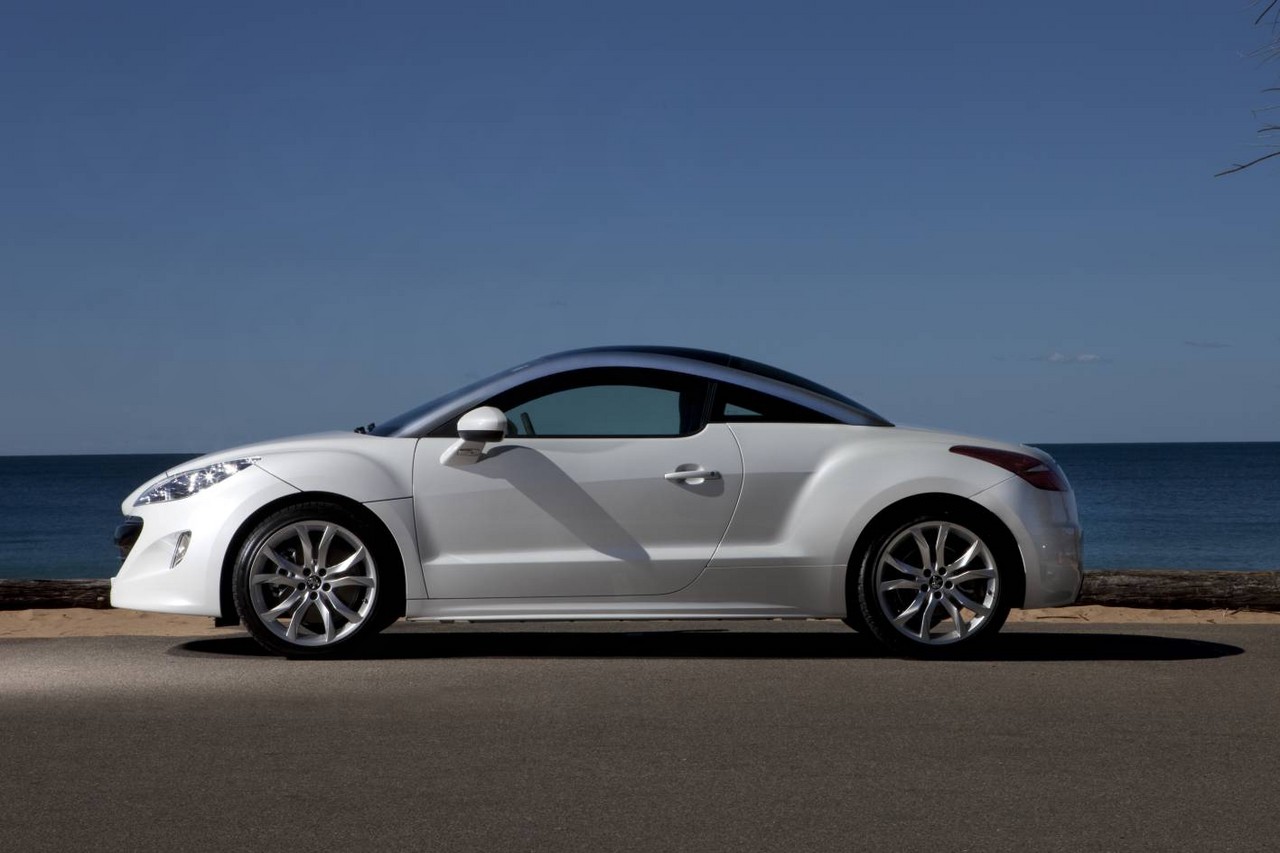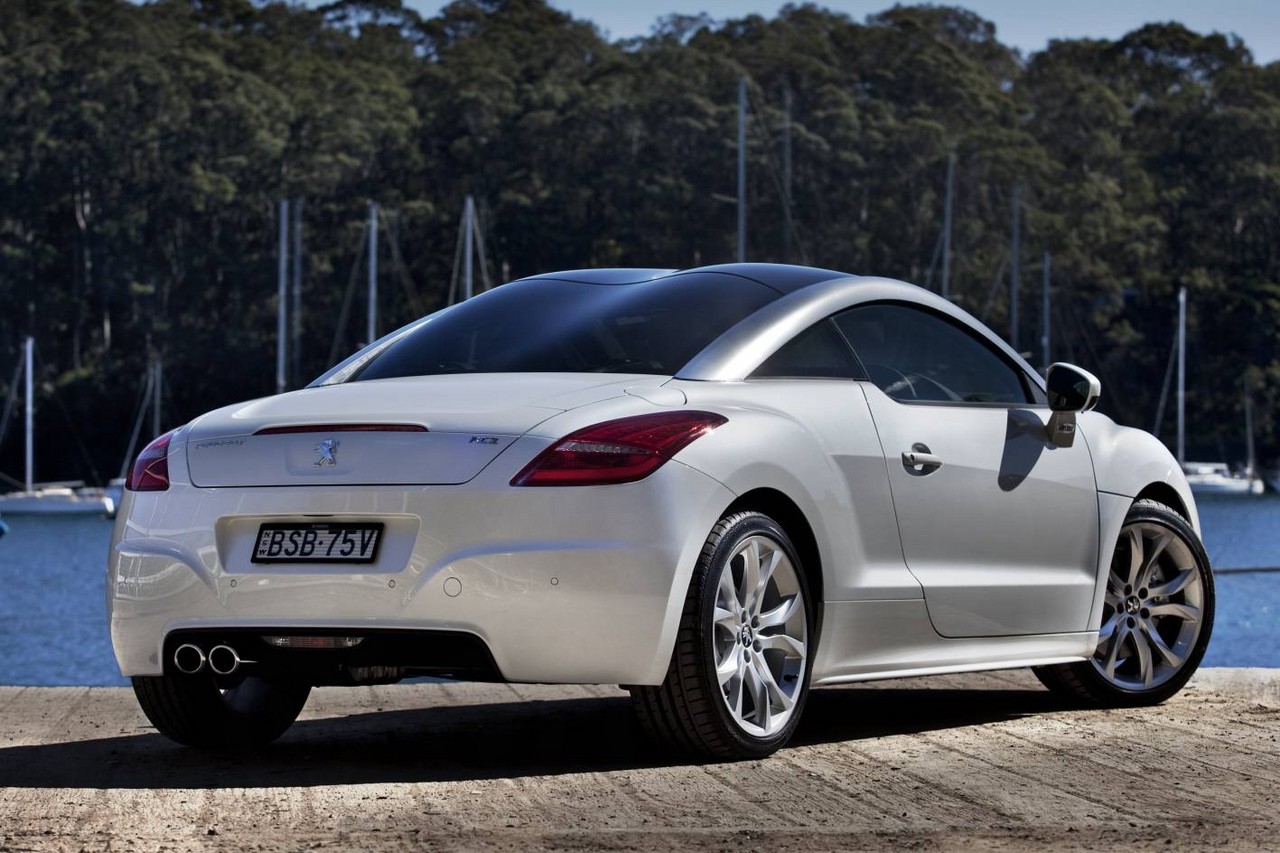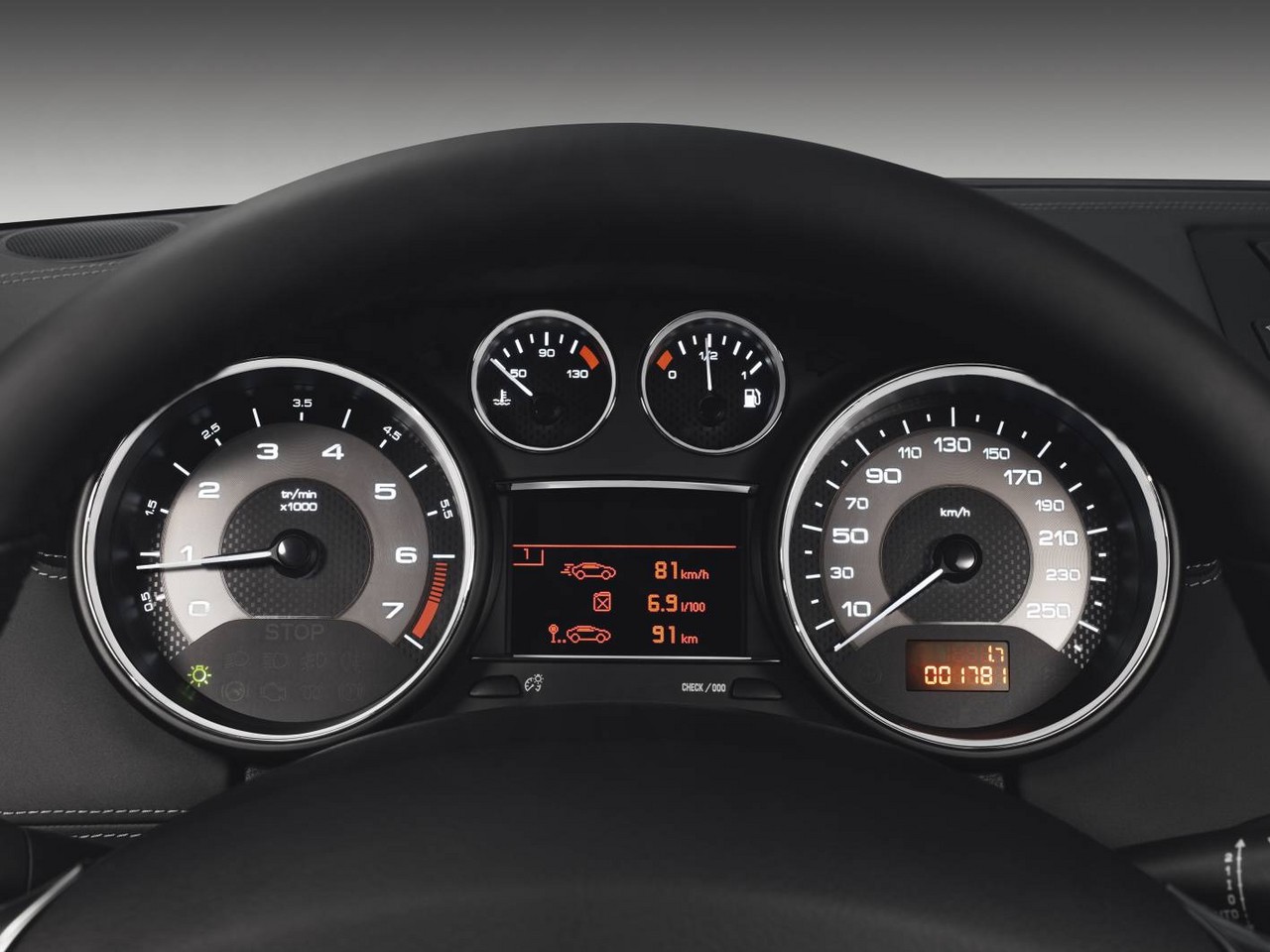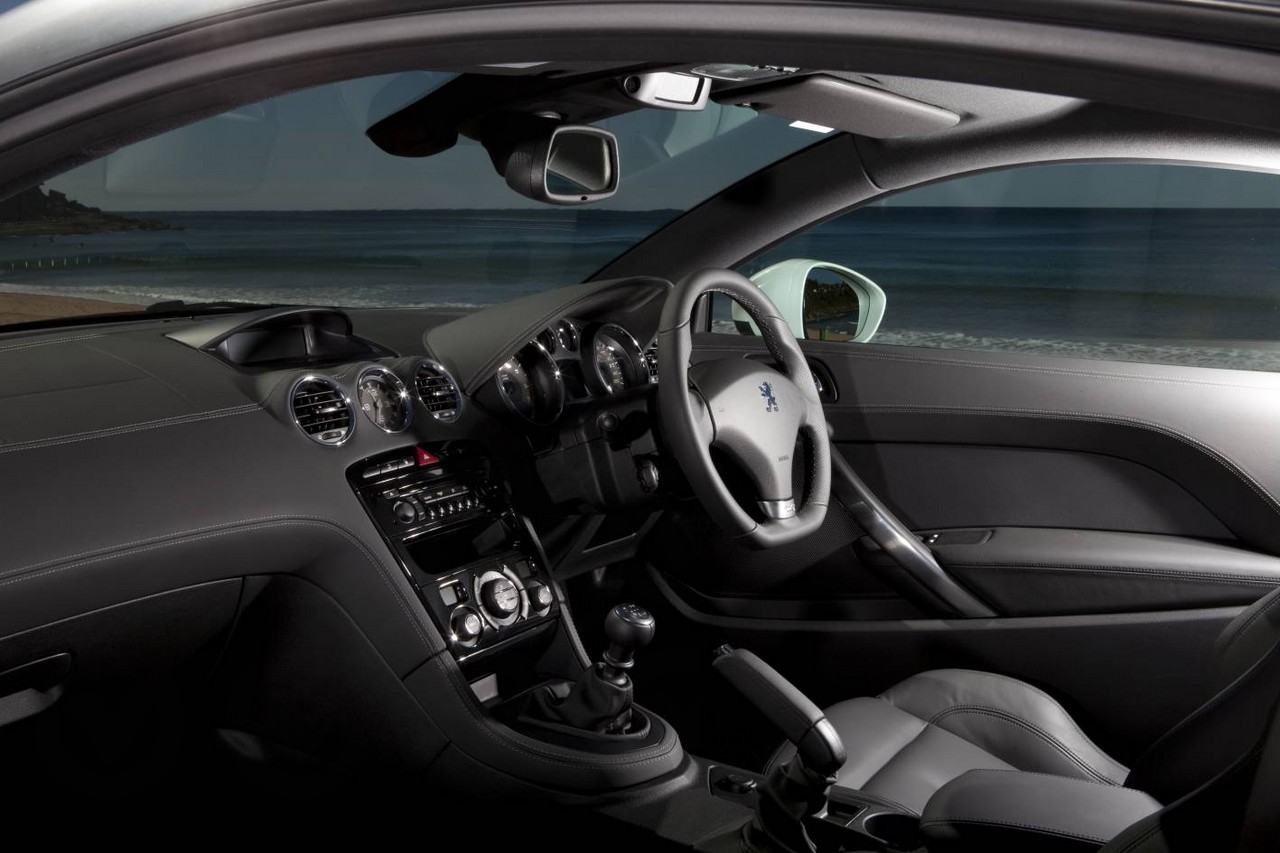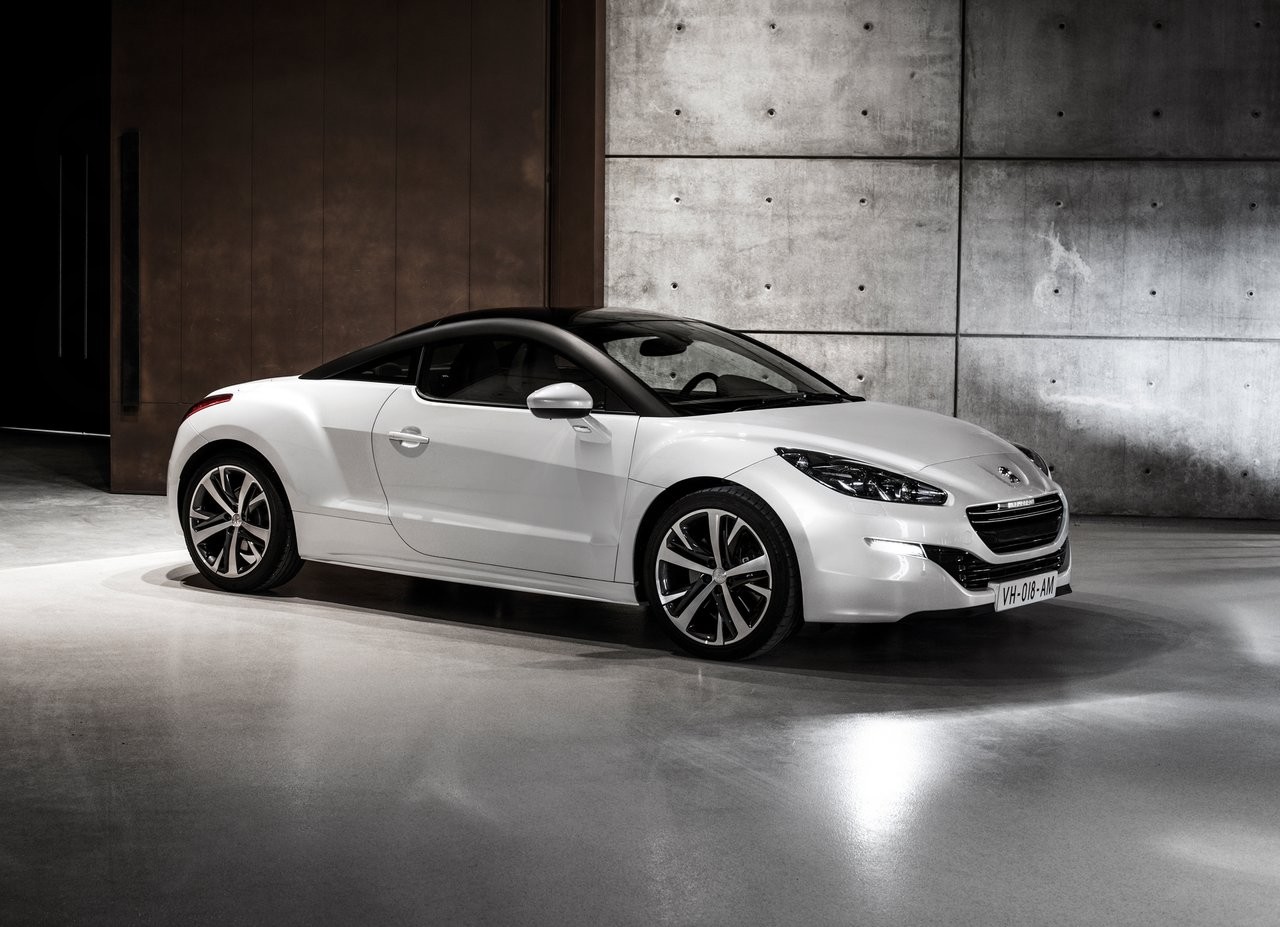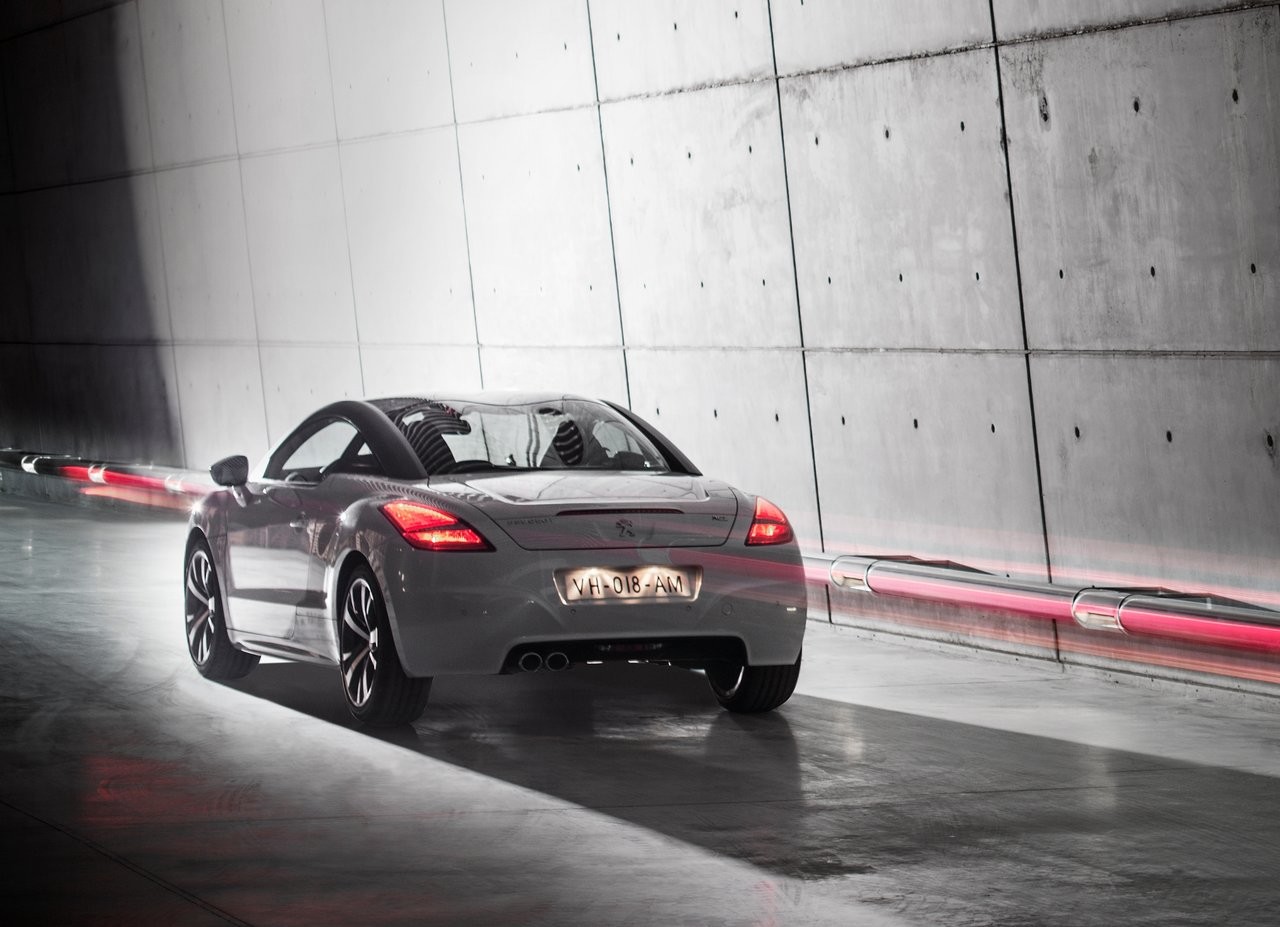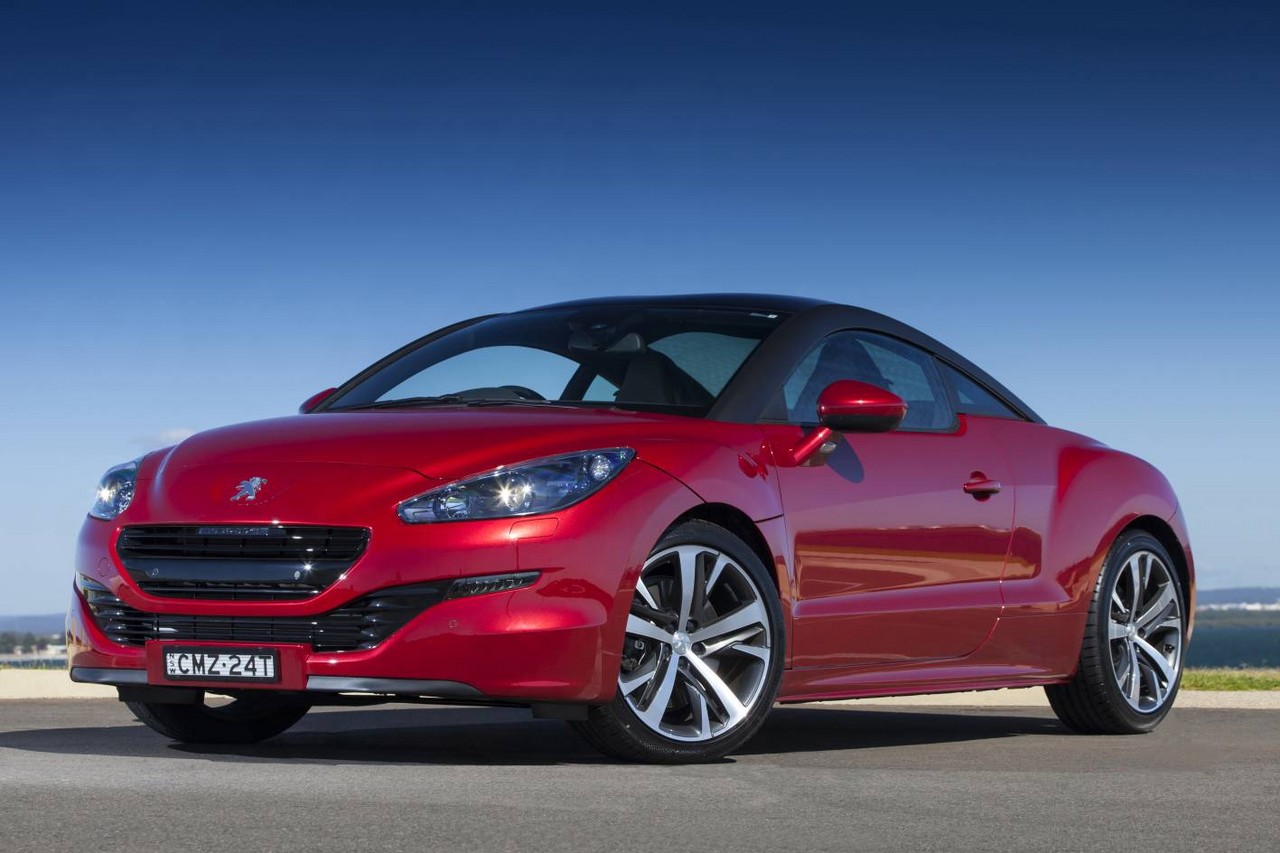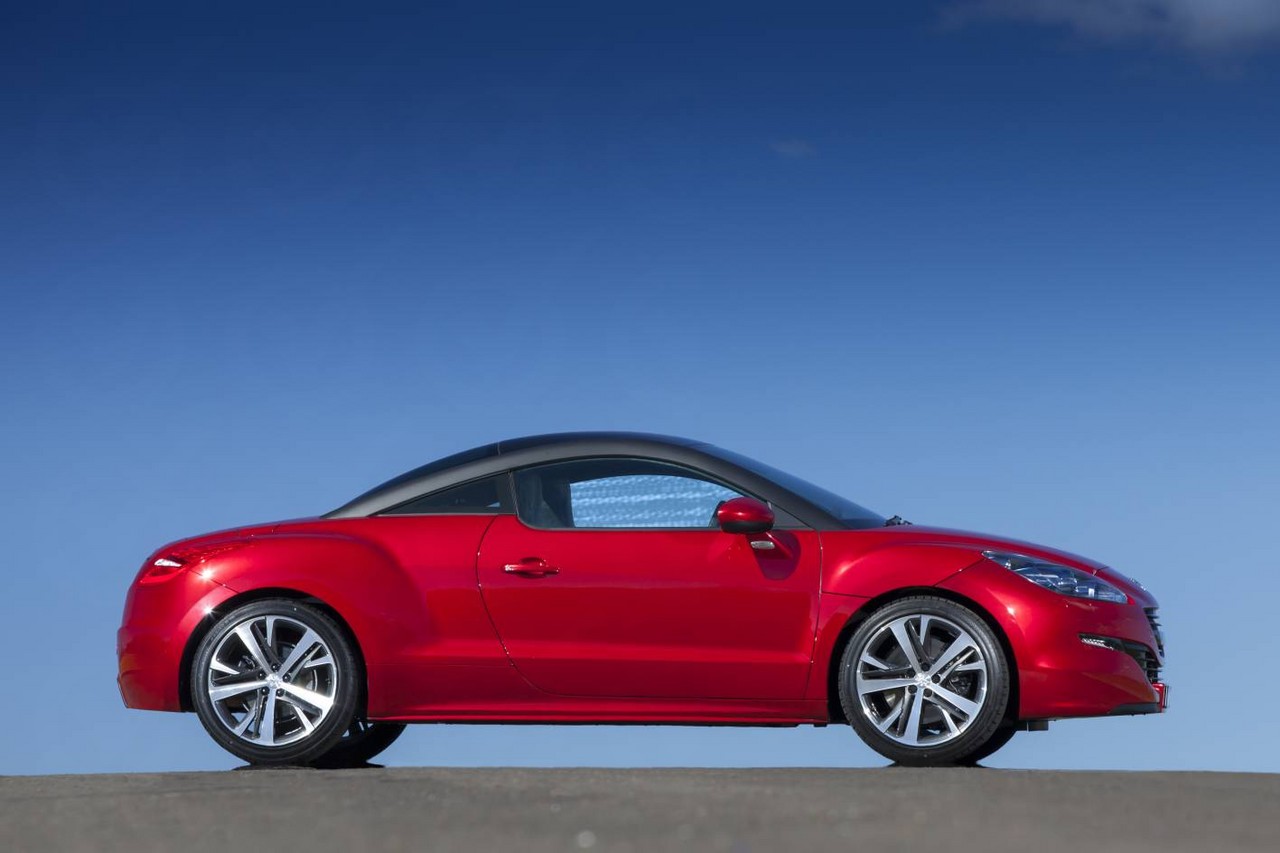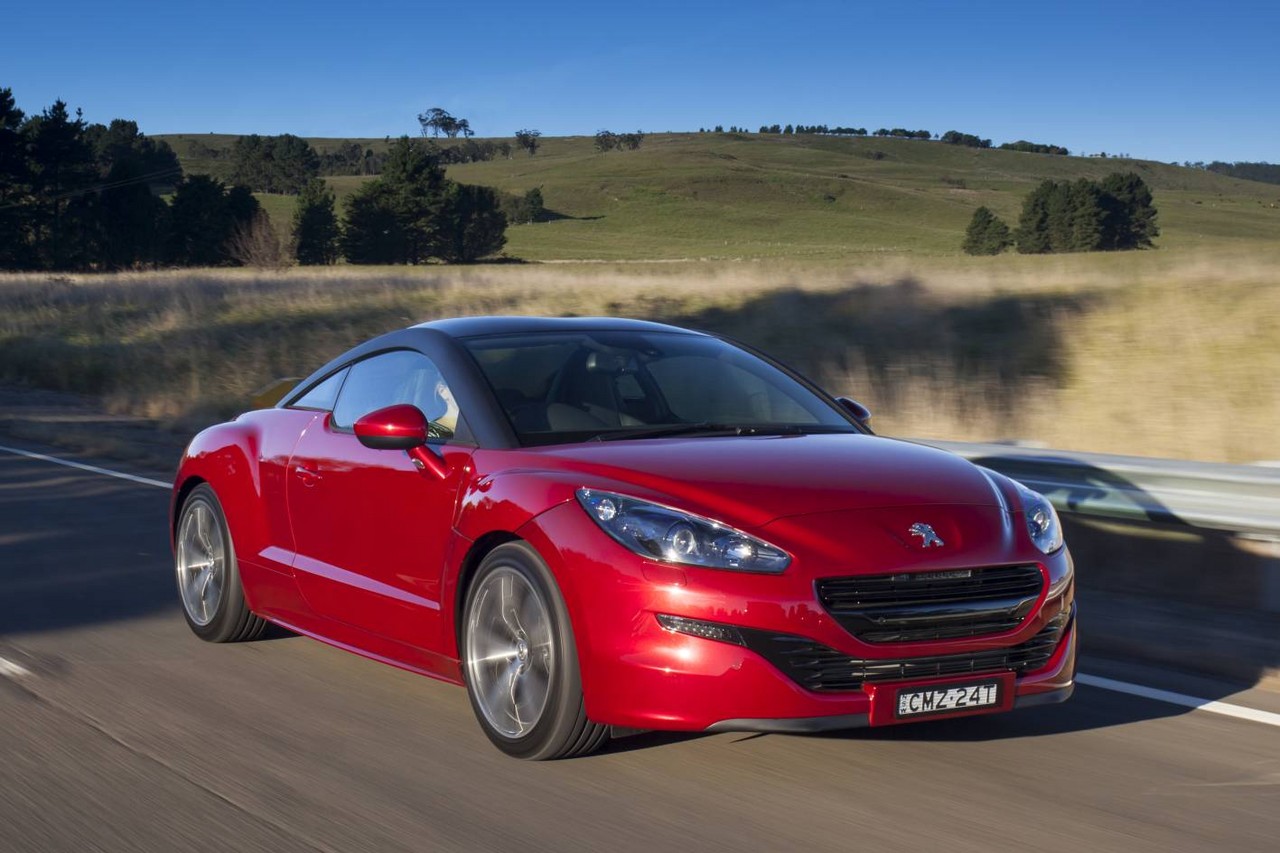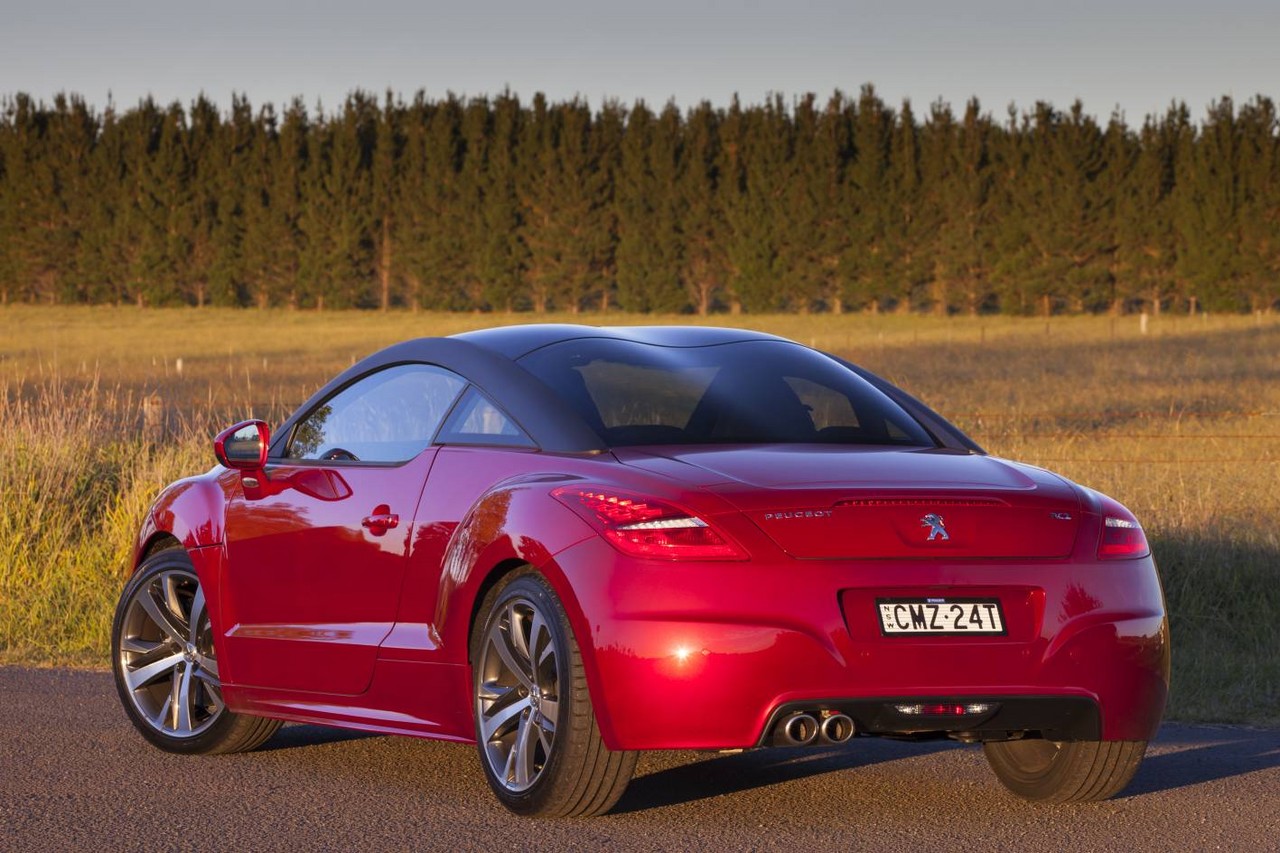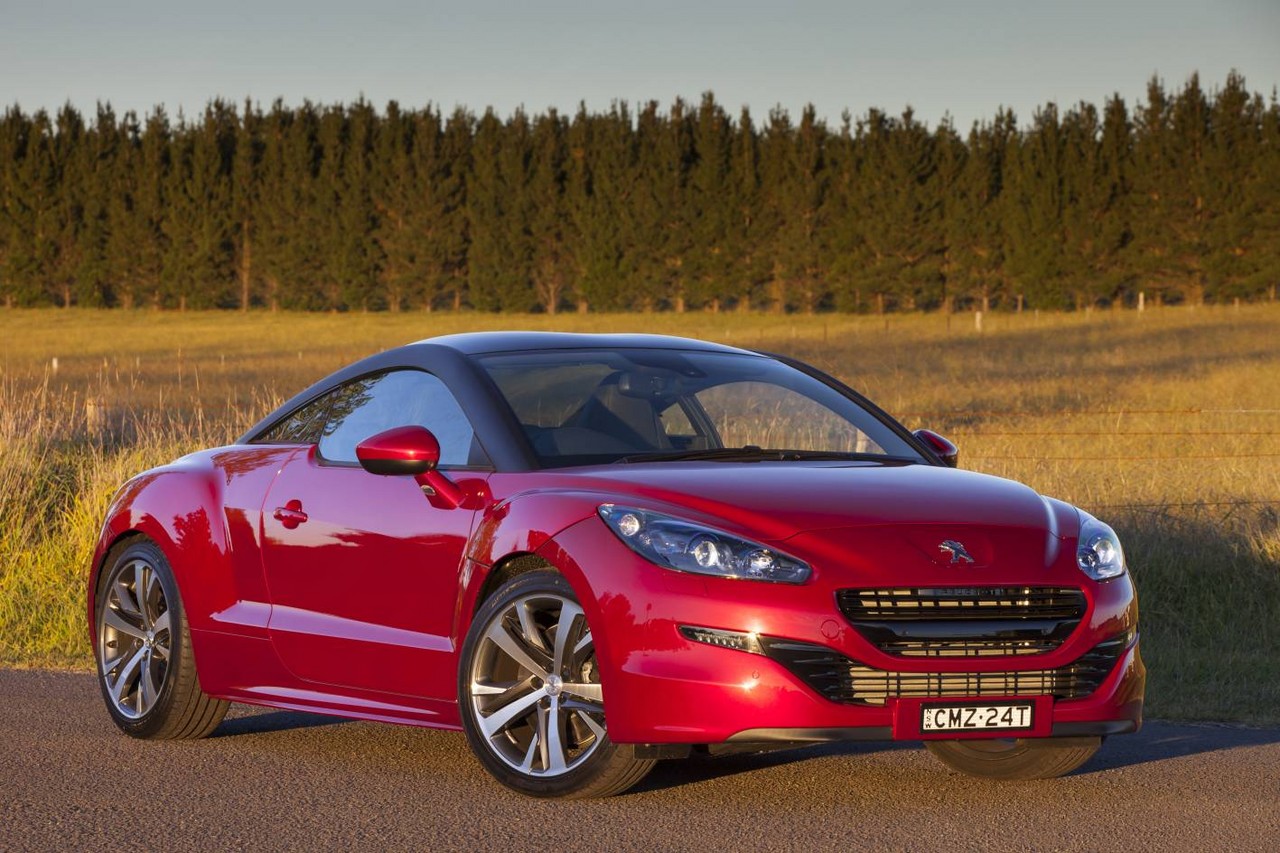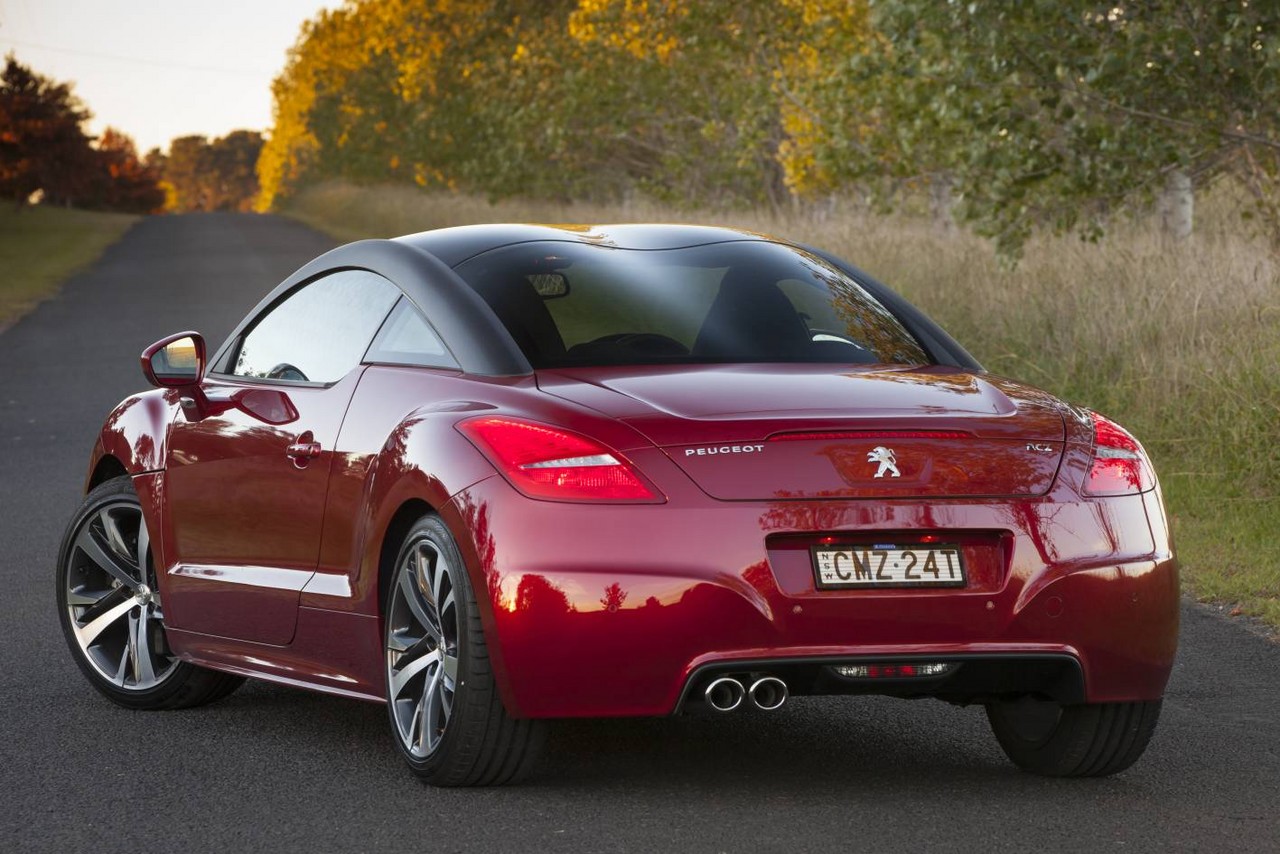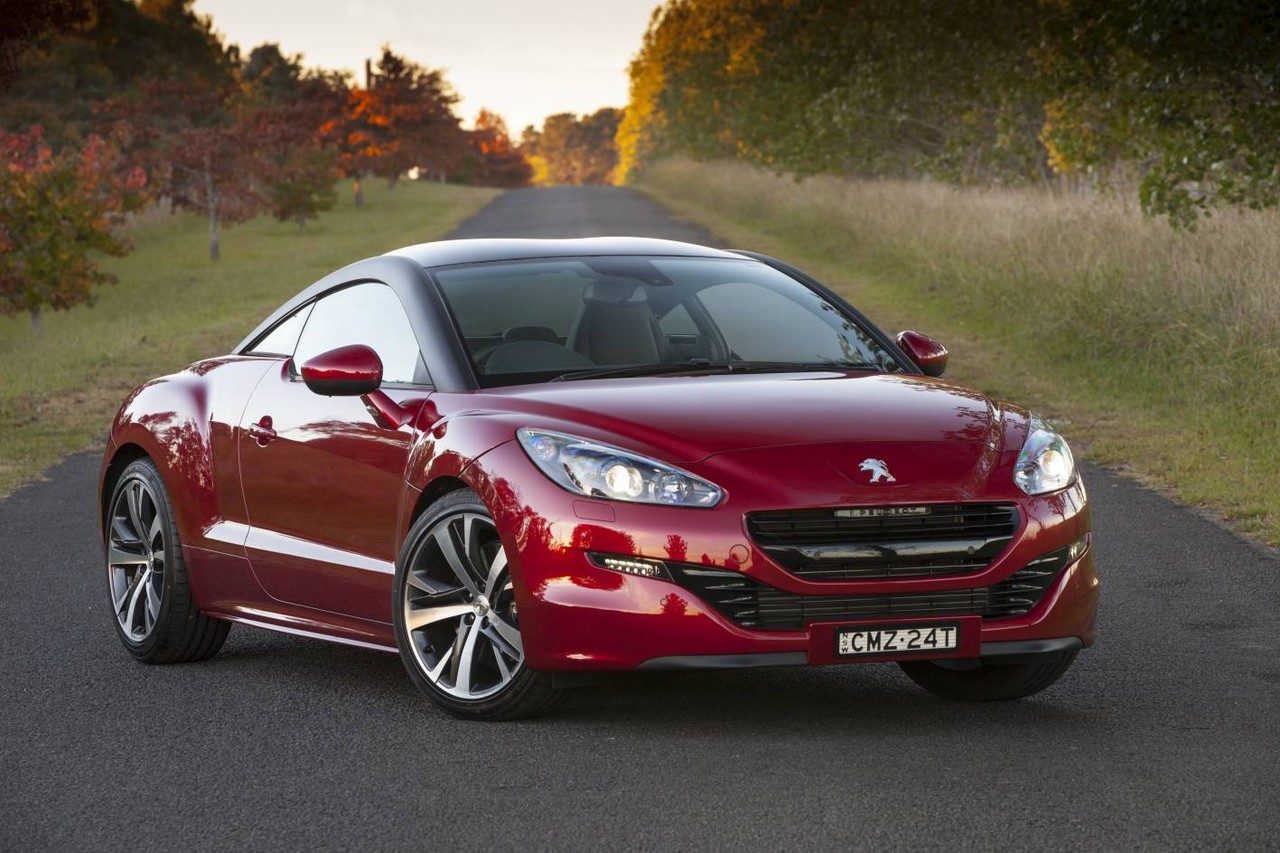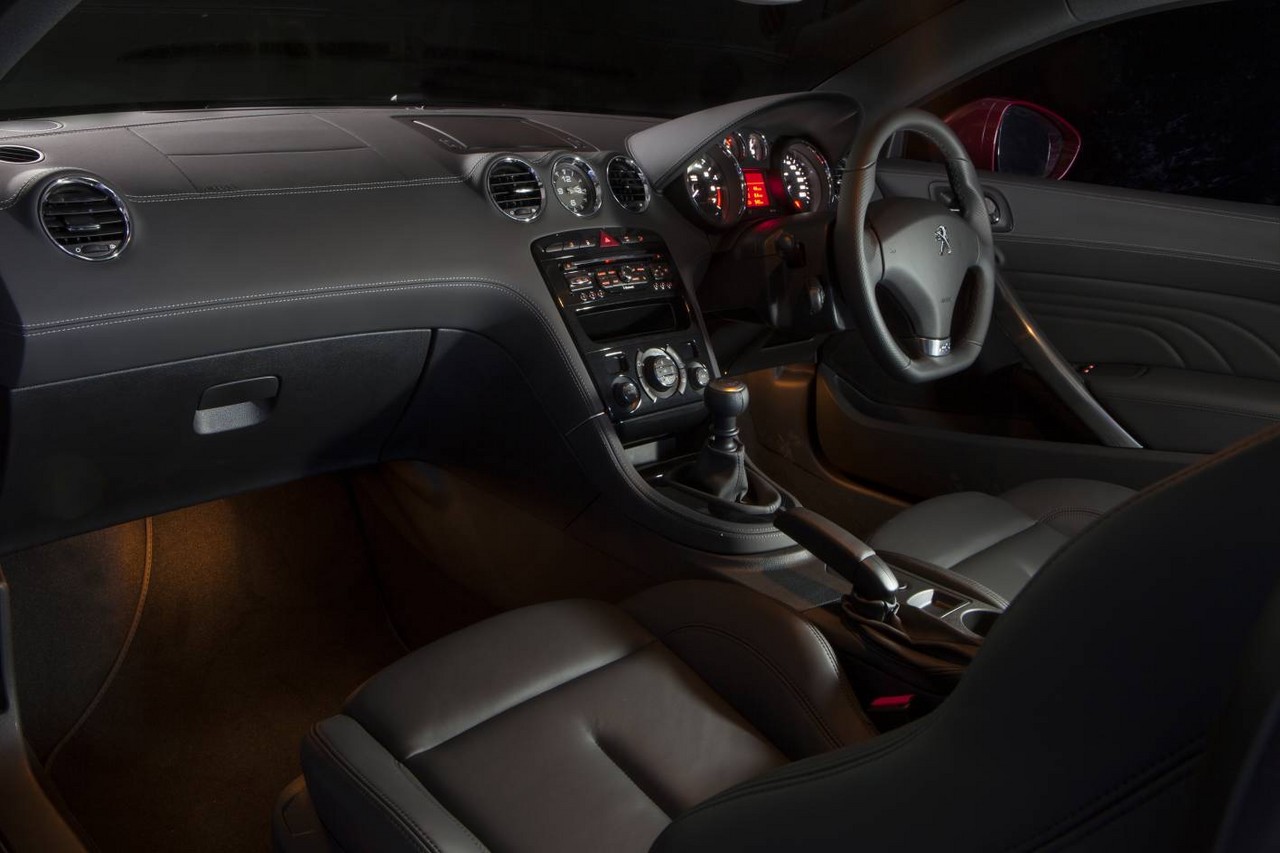
- Responsive 1.6-litre turbo petrol engine
- Frugal 2.0-litre turbo-diesel engine
- Competent ride/handling balance
- Useful boot
- Steering is accurate…
- … but lacks feel
- For 1.6-litre turbo petrol engine, manual transmission has notchy action and clutch pedal has high take-up point
- Rear seats for small children only
Review: Peugeot Phase I RCZ (2010-13)
Overview
Released in September 2010, the Peugeot Phase I RCZ was a two-door coupe with ‘two-plus-two’ seating. Manufactured in Graz, Austria, the front-wheel drive RCZ was available with 1.6-litre turbocharged petrol and 2.0-litre turbo-diesel engines.
Engines
Of the engines,
- The 1.6-litre EP6DT petrol engine had a twin scroll turbocharger, direct injection, double overhead camshafts, four valves per cylinder, variable inlet valve timing and a compression ratio of 10.5:1;
- The 1.6-litre EP6CDTX petrol engine had similar properties but added variable inlet valve lift and variable exhaust valve timing; and,
- The 2.0-litre DW10 C HDi diesel engine had a variable geometry turbocharger, intercooler, common-rail injection, double overhead camshafts and four valves per cylinder and a compression ratio of 16.0:1.
The EP6DT and EP6CDTX petrol engines were offered with automatic and manual transmissions, respectively, while the HDi engine was solely available with a six-speed manual transmission.
Dimensions and suspension
Based on PSA PF2 platform which was shared with the Peugeot T7 308 hatch , the RCZ was 4287 mm long, 1845 mm wide, 1362 mm tall and had a 2596 mm long wheelbase; the RCZ’s drag coefficient was 0.32 Cd.
The RCZ had MacPherson strut front suspension and a torsion beam rear axle.
| Variant | Engine | Trans. | Peak power | Peak torque |
|---|---|---|---|---|
| 1.6 Turbo | 1598 cc EP6CDT turbo petrol I4 | 6sp auto | 115 kW at 6000 rpm | 240 Nm at 1400 rpm |
| 1598 cc EP6CDTX turbo petrol I4 | 6sp man. | 147 kW at 5500 rpm | 275 Nm at 1700 rpm | |
| 2.0 HDi | 1997 cc DW10CTED4 turbo-diesel I4 | 6sp man. | 120 kW at 3750 rpm | 340 Nm at 2000-3000 rpm |
Safety equipment
Standard safety equipment for the RCZ included dual front airbags, front side airbags, ABS, electronic brake force distribution, brake assist, electronic stability control, traction control, hill start assist, front seatbelt pretensioners and load limiting seatbelts (front and rear). The RCZ was also fitted with a bonnet which would automatically rise in the event of a collision to cushion a pedestrian’s impact.
Brakes
The standard braking package for the RCZ consisted of 302 mm by 26 mm ventilated front discs and 290 mm by 12 mm solid rear discs. Models with the 147 kW petrol engine, however, were fitted with 340 mm by 30 mm ventilated front brake discs.
Features
Standard RCZ features included 18-inch alloy wheels, a six speaker sound system with CD player, MP3, USB and Bluetooth connectivity, dual zone climate control air conditioning, leather trim, power adjustable front seats (including lumbar support) with driver’s seat memory settings, heated front seats, folding rear bench seat, cruise control with speed limiter, front and rear fog lights, front and rear parking sensors, automatic headlights, rain-sensing wipers, leather-wrapped steering wheel with audio controls, remote central locking, power windows and mirrors, power folding and heated mirrors, automatically tilting mirrors on reverse, a height and reach adjustable steering wheel, electrochrome rear view mirrors, 12 volt power outlet, trip computer, an alarm and immobiliser.
The RCZ was also fitted with an automatically deploying rear spoiler (with manual override).
2011 RCZ 200th Anniversary
In January 2011, 200th Anniversary editions were released for each of the models within the RCZ range. The 200th Anniversary editions were distinguished by their 19-inch ‘Midnight Silver’ Sortilege alloy wheels, ‘carbon fibre effect’ roof and door mirrors, painted brake calipers, black painted grille, three-piece luggage set and umbrella. Furthermore, two paint finishes were available: pearlescent Pearl White or metallic Perla Nera Black.
Brochure and specifications
Review: Peugeot Phase II RCZ (2013-15)
Overview
Released in May 2013, the Phase II RCZ introduced updated styling and additional features. Visually, the Phase II RCZ could be identified by its new front mask which included xenon headlights with titanium surrounds and claw-shaped daytime LED running lights; other changes included matt black roof arches (previously silver), a black grille and black brake calipers.
Inside, the Phase II RCZ was fitted with new door pads with trim inserts, lacquered black gear lever surround and two aluminium dashboard inserts. An ‘acoustic’ windscreen was also introduced to reduce interior noise.
| Variant | Engine | Trans. | Peak power | Peak torque |
|---|---|---|---|---|
| 1.6 Turbo | 1598 cc EP6CDT turbo petrol I4 | 6sp auto | 115 kW at 6000 rpm | 240 Nm at 1400 rpm |
| 1598 cc EP6CDTX turbo petrol I4 | 6sp man. | 147 kW at 5500 rpm | 275 Nm at 1700 rpm | |
| 2.0 HDi | 1997 cc DW10C turbo-diesel I4 | 6sp man. | 120 kW at 3750 rpm | 340 Nm at 2000-3000 rpm |
| R | 1598 cc EP6CDTR turbo petrol I4 | 6sp man. | 199 kW at 6000 rpm | 330 Nm at 1900-5500 rpm |
Features
Compared to its Phase I predecessor, standard features for the Phase II RCZ were extended to include 19-inch ‘Technical Grey’ alloy wheels with 235/40 R19 tyres and xenon headlights.
2014 Peugeot RCZ R
In September 2013, a limited production run of five hundred (500) Peugeot RCZ R models commenced – thirty five (35) of these vehicles were available for Australia with the official release occurring in May 2014.
The RCZ R was powered by Peugeot’s 1.6-litre turbocharged THP 260 engine which – compared to the standard 1.6 Turbo engine – featured forged pistons developed by Mahle Motorsport, a new twin-scroll turbocharger, a larger intercooler and a compression ratio of 9.2:1. The RCZ R was also had a strengthened six-speed manual transmission, an upgraded clutch and was fitted with a Torsen front differential. With a kerb weight of 1280 kg, the RCZ R could accelerate from rest to 100 km/h in 5.9 seconds. The RCZ R was also fitted with 380 mm by 32 mm front brake discs with four-piston calipers.
Compared to the standard RCZ, the RCZ R featured 19-inch ‘R’ two-tone alloy wheels with Goodyear Eagle F1 Asymmetric 235/40 R19 tyres, 10 mm lower sports suspension, combination leather/alcantara front bucket seats (without power adjustment or heating functions), ‘R’ badge for the centre console, red trim stitching and a fixed rear spoiler.
Brochures
Specifications
- Specifications: Peugeot Phase II RCZ (May 2013)
- Specifications: Peugeot Phase II RCZ and RCZ R (May 2014)
Related links
